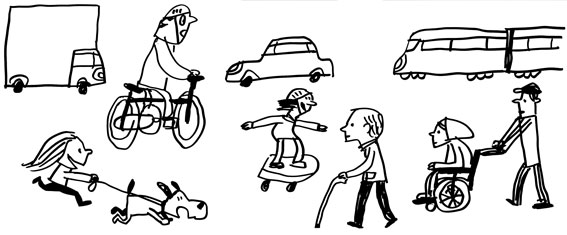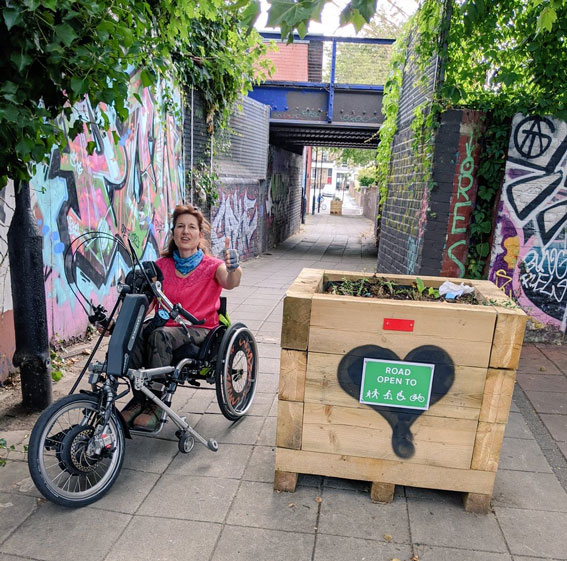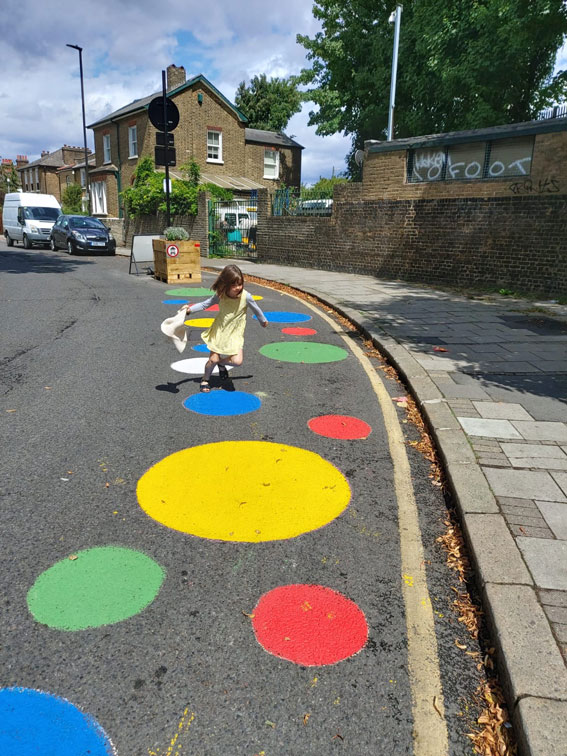WHO ARE STREETS FOR?
The recent announcements of changes to the Highway Code puts people walking and wheeling at the top of a new road user hierarchy making our streets safer for everyone.
Sarah Berry, Living Streets Trustee and Lambeth Local Group member blogs on how shifting the narrative on who our streets are for can lead to making ambitious and necessary changes to our cities, towns and villages.

Illustration by Dave Sutton

Imagine waking up and stumbling upon your neighbourhood with fresh eyes, like it was the first time you were ever seeing it.
You walk along the pavements, dodging street signs, guard rails and pavement parking and take in the world around you. Waiting for a green man to let you cross a busy intersection -- you hear engines, horns, and faintly in the background, the sounds of children playing in a fenced off playground nearby. Breathing deeply, the scent of jasmine just breaks through the smell of the exhaust pumping out of the van idling next to you.
If someone came up to you at this moment and asked you, “who are these streets for?” you’d be forgiven for being assured of the answer: cars.
In too many British towns, neighbourhoods and cities our streets have become dominated by cars. Our infrastructure has been designed around moving vehicles as quickly and efficiently as possible, to the detriment of everybody else.
Let’s take pavement parking, for instance. Those who park their cars across pavements don’t do so because it’s a prime spot. They do it because they’re trying to be helpful. With their minds focussed on the drivers trying to navigate narrow streets that were never designed to handle such heavy traffic, they do their best to keep out of the way -- to take up less space. But by seeing the street as the land of the car, they unwittingly spoil it for all other users -- like the young mum pushing a stroller, or the wheelchair user -- who both rely on that same pavement to get around.
By prioritising cars, we de-prioritise every other person who has a stake in our streets. But it doesn’t have to be this way.
Change begins with a simple question: who should our streets be for?
The answer is obvious: streets are for people.
Our streets are for the man in his wheelchair wheeling to the bus stop. Our streets are for kids walking to school. Our streets are for the young couple taking their whippet for some exercise. Our streets are for the young mum just starting from couch to 5K after months of lockdown inactivity. And yes, our streets are for people who drive too. But they’re just one of many road users who deserve safe and joyous use of our streets.
As soon as we start seeing our streets through the eyes of others, our imaginations run wild with the possibilities of these places, and the changes needed are obvious.
We need wider pavements for those who use them to move, meet and play. We need to move street clutter from the pavement to the road, or better yet, get rid of it entirely. We need less traffic and we need to slow it right down, so the streets are safe for everyone.
All around the country, local authorities are seeing the need to transform their streets and better yet -- they’re doing it. From low traffic neighbourhoods, to school streets, to pedestrianised town centres - so many of our streets are no longer just for cars. They’re for all of us.
And while we’ve still got a hell of a long way to go, the path forward is clear. Let’s walk it together.


About the author
Sarah Berry
Sarah Berry, Living Streets Trustee and Lambeth Local Group Member